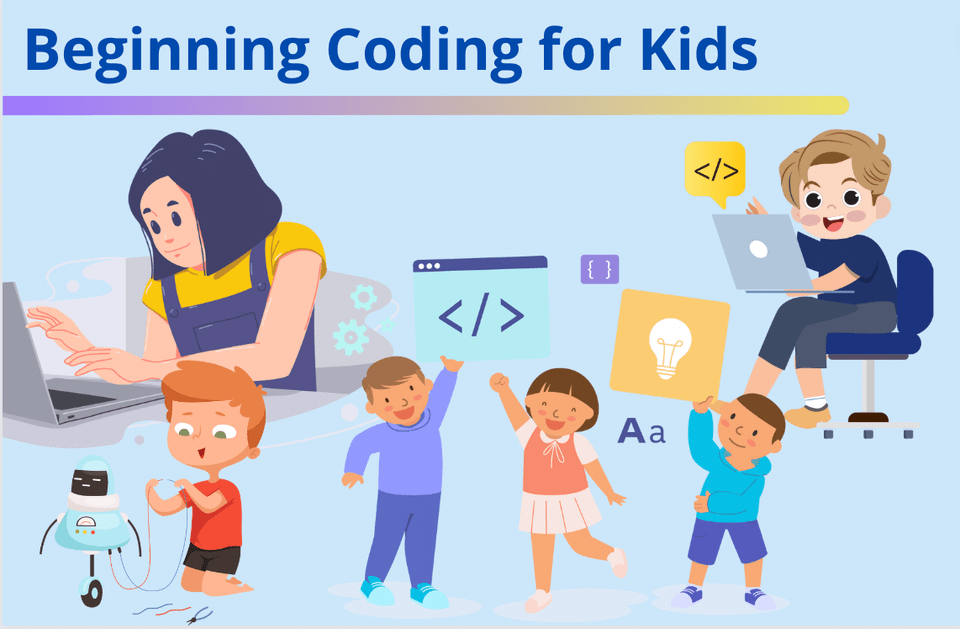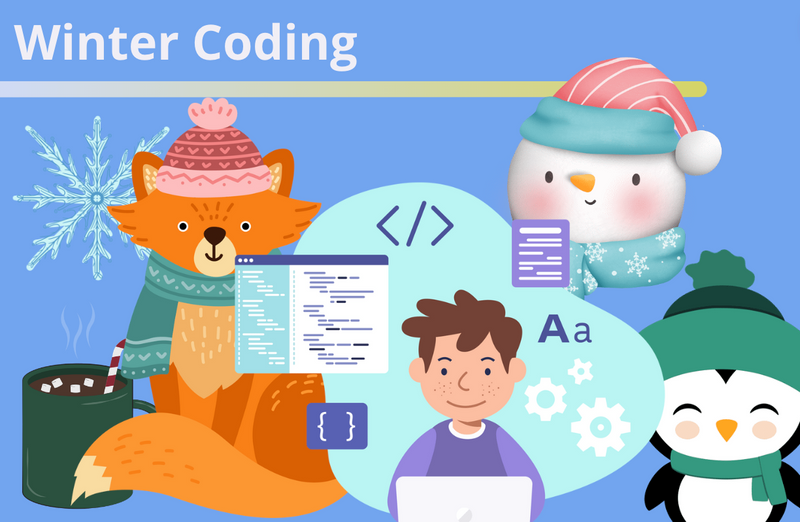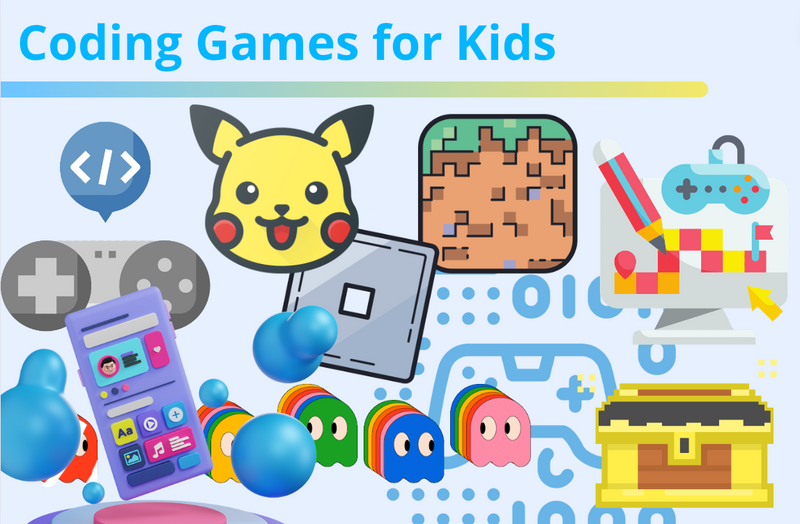Are you ready for beginning coding for kids? With computer programming at the forefront of many emerging technologies and computers themselves responsible for seemingly everything, many parents will wonder how they can get their student a head start on this invaluable skill.
Today we’ll share the best approach for introducing your learner to coding and serve to remove some of the mystery surrounding this sphere. It’s important not to overwhelm your student and present them with accomplishable tasks and this article will detail the best strategies for beginning coding for kids.
Beginning coding for kids
Get answers to the most common questions parents have about how to dive into beginning coding for their kids, including what age is a good time to start, some helpful free resources out there, and what students can expect to focus on.
At what age can a child start coding?
Students as young as 7 years old can begin to learn coding. Once they have a basic understanding of mathematical concepts such as addition and subtraction, these principles can translate easily to coding concepts.
At such a young age, the biggest obstacle may in fact be the student’s familiarity with technologies involved. For example, most seven year olds aren’t great with a mouse and keyboard and are not sure how to navigate a desktop. It’s important for parents to understand that these hard motor skills need not necessarily prevent students from understanding basic programming concepts.
How do I start my child on coding?
The first step to starting your child on coding it to realize how widely available resources actually are. By nature, programming education is largely open-source, meaning it is free and available to anyone with access to an internet search engine. Here are the first five steps any parent can take to set their student up for coding success.
1. Typing lessons
As mentioned above, one of the biggest obstacles for coders at a young age is being able to actually type their code! For this reason, letting students practice their typing skills even by just writing in word docs will go a long way once they start their first coding lessons. Things parents may take for granted, such as how to spell ‘function’ or ‘vector’ may not be obvious at all to a student of even 10. Typing speed will also give the student the confidence to keep up with their instructor when the time for live lessons comes along.
2. Sign up for Scratch
Scratch is a web platform developed by the minds at MIT for the express purpose of introducing young learners to programming concepts. There are several distinct advantages of Scratch as an introductory platform. Firstly, it is free, and requires only an email address to sign up. At the core of Scratch however, is its simplicity. The interface uses simple drag and drop blocks of code, also known as block coding. Students can attach different blocks of color coordinated code to make a fully functional program. The interface is also bright, colorful and easy to read, making it perfect for students who are still learning to use the computer, yet alone write a computer program.
At Create & Learn we have a free Scratch class intro session designed by experts from Google, Stanford, and MIT, that's led live by an instructor. This is a great way to get guided through the Scratch platform, and learn fundamental coding concepts.
3. Introduce them to Variables
At the core of any programming language is the concept of a variable, or a piece of stored data that is meant to be manipulated or changed throughout a program. An easy example to provide is the score of a game; to start, the score can be zero, however as players meet goals, the score increases. If your student has never done algebra, try providing them with some basic algebraic equations( x + 2 =5, solve for x) in order to get them to think about variables.
4. Introduce them to Data Types
Hand in hand with the concept of variables are data types. Our preferred method of explaining this to students is to have them imagine they are moving. When they make the boxes (variable) to hold all their things, for example, a ‘Toys’ box, a ‘Books’ box and a ‘Clothes’ box, they don’t want to mix the categories. In programming languages the concept of data types help keep variables separate; we can not store a number in a string (character) variable, nor can we store a string in a boolean(true/false) variable.
5. Talk about conditional statements with them
It’s likely you use conditional statements in your parenting day-to-day without even knowing it. The concept is simple: if one thing is true, another thing will take place or occur. As an example, if your student cleans their room, maybe they get a reward. In programming the system works similarly; if one number or expression has a certain value, we can proceed to the next part of the code. Another analogy could be more sequential: if you finish the first chapter of the book, then you can proceed to the next chapter.
Beginning coding for kids programs and lessons
With these online platforms, students can move at their own pace and pick and choose topics that are interesting to them.
1. Create & Learn: Create & Learn has been made by professionals in the industry for the express purpose of getting kids coding. The intuitive interface, and availability of teachers in the live online classes is outstanding when compared to other platforms of similarity. And kids can learn how to create games right from the start! Additionally, the sheer volume of different topics covered by Create & Learn is mind blowing. You can even get started with a free introductory coding lesson, so there’s no risk in trying!
2. CodeCombat: What better way to teach coding than to make a game? The folks at CodeCombat have done exactly that. With a wide array of programming languages to choose from, the games in Code Combat take you through some of the key concepts mentioned above while not letting learners get bogged down in syntax.
3. Khan Academy: Khan Academy is another great free platform to get students to explore a range of topics. If your learner has no experience with basic math or algebras, Khan Academy is the perfect place to get them up to speed. Khan Academy lecturers deliver a bevy of topics at a range of levels. With Khan Academy, students can sample any number of different programming languages at will in digestible videos.
Beginning coding for kids free classes and camps
You can start with Create & Learn’s free coding classes to get a taste for the quality of our teachers and practices.
1. Free Scratch class: Scratch is the best way for kids to learn concepts without getting bored and discouraged by specific syntax. Scratch is fun and easy to use, with the drag and drop mechanic itself acting much like a game. With a professional live teacher, the Scratch Ninja intro course takes students through the key concepts of programming as well as provides them a greater scope of programming applications.
Ages: 7 - 11 years old
2. Free Minecraft class: The popularity of Minecraft may be evident to some parents. What they may not realize is that this seemingly simple game is a great tool to get your student to start thinking programmatically. The language used to mod, or change the rules and code of Minecraft, allows students near-total freedom in what they want to add. This course specifically focuses on teaching key concepts such as though mentioned above, as well as loops, events and functions. The main draw of this course is for students who already have a deep love for Minecraft.
Ages: 8-11
3. Free Python class: Python is a language used in real-world development for companies as big as Netflix and Google. With this course, your student will learn about some more complex topics such as data libraries, which play a huge role in developing AI. The application of Python is nearly universal, and can even be used to make games if that’s what your student is interested in.
Ages: 11 - 15
4. Meta's Engineer for the Week classes: Have fun learning how to code, and design your own project for social good with Meta’s Engineer for the Week online classes offered by Create & Learn. This curriculum focuses on getting students to work in a team as they learn essential coding concepts. Also, students can focus their efforts on a social issue they care about. The curriculum uses Scratch as its platform.
Then jump right into the best coding classes for kids.
Beginning coding for kids games and tutorials
You can find some additional resources for free coding games; these are a great way to get your student practicing and having fun while doing it!
1. Coding games: Check out a list of the best coding games your kid can use to get an into to programming concepts and flex their creativity.
2. Free coding games for kids: Enjoy a comprehensive list of challenging and free coding games.
3. Scratch projects: Making games is a great way to learn coding concepts, and there’s nothing wrong with making a game that has already been made.
4. W3Schools tutorials: W3Schools remains one of the best resources to get highly specific answers to your programming questions.
Beginning coding for kids
Coding is going to be the number one skill in demand for the foreseeable future. Why not get your student a head start? You can start them as young as seven, and even if they’re past that age, it’s not too late! Get started with our most popular beginner-friendly coding class, Scratch Ninja for Grades 2-4 (or Accelerated Scratch for kids in Grades 6+ and Scratch Junior for kids in Grade 2 and younger).
Written by Jack Stewart. Jack is a Create & Learn instructor who experiences the world through travel and storytelling. He incorporates his travels into his creative works including coding, story writing, and game design.




